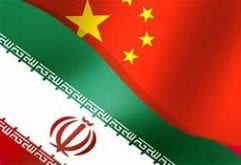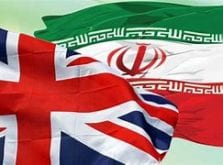lobelog – In his conversations with American journalists during his recent visit to New York, as reported in The New Yorker, Iran’s Foreign Minister Javad Zarif said that some of Iran’s regional rivals, especially Israel, Saudi Arabia, and the United Arab Emirates, want its disintegration. He could have added a few others to the list, including Azerbaijan, Afghanistan, Turkmenistan, and even Turkey and Iraq, although they are more discrete and do not express their anti-Iran feelings so openly, at least at the official level.
by Shireen T. Hunter
All the last named states have territorial claims towards Iran. Azerbaijan covets the Iranian province of Azerbaijan, which in its definition extends all the way to Qazvin only a few hundred kilometers from Tehran, plus some of its northern provinces close to the Caspian Sea. Since its independence, the republic has developed and propagated the myth of a once-united northern and southern Azerbaijan wrongfully separated by a Russo-Persian conspiracy. It conveniently ignores the fact that Iran waged two wars against Tsarist Russia in order to keep its South Caucasian provinces. Moreover, Azerbaijan was not known by that name until 1918, when an independent republic was briefly established there and adopted the name Azerbaijan.
At the time, the Iranian government objected to this action but to no avail. The idea of a northern and southern Azerbaijan first emerged during Stalinist times when the USSR wanted to incorporate Iran’s Azerbaijan province. Notwithstanding this history, the Azerbaijan’s propaganda has been quite successful among an increasing number of people in Iranian Azerbaijan.
Throughout this period, Iran has not taken Azerbaijan to task for its irredentist claims towards Iranian territory. In view of Iran’s international vulnerabilities, such an act would generate even bigger problems for Tehran. In fact, some states—such as Israel plus elements in America—have supported Azerbaijan’s claims. Saudi Arabia has actively cultivated Baku to pressure Iran from the north as well the south.
In the case of Iran’s disintegration, Turkmenistan for its part would be delighted to incorporate the Golestan province, which has a Turkmen minority. Turkish nationalists and pan-Turkists, but also many otherwise reasonable Turks, have for the last 25 years fantasized about establishing a territorial link between Turkey and Central Asia to create a strong Turkic bloc, a goal made possible only by Iran’s disintegration. Turkey has also pursued a policy of spreading its economic and cultural influence in Iranian Azerbaijan while pretending friendship with Tehran. An Iranian news site reported that Ankara wants to establish a military base in Azerbaijan’s autonomous republic of Nakhichevan, only 140 kilometers from Iranian Azerbaijan’s largest and most important city, Tabriz. Should such a base materialize, Iran’s security could potentially be threatened.
Even Shia-dominant Iraq has long had its eye on Iran’s Khuzestan province. This may be why many Iranians were outraged when General Qasim Soleimani, the commander of the Quds army, brought in Iraq’s al-Hashd al-Shaabi into the province to help with the challenges posed by the floods. If Iran were to disintegrate, Afghanistan too would swoop in—to incorporate Iran’s Khorasan province.
Yet the political leadership in Tehran worries more about Palestinian statehood, Syria’s territorial integrity, or the latter’s sovereignty over the Golan Heights than about these potentially serious geopolitical threats to Iran’s own national survival.
Meanwhile, over the last 40 years, the Islamic republic has pursued an anti-Iranian cultural and political strategy. Even today, the supreme leader, and many other senior clerics and revolutionaries, has trouble even mentioning Iran’s name or referring to its achievements. A recent example was Pakistani Prime Minister Imran Khan’s meeting with the supreme leader in Tehran when he talked about Iran’s cultural influence over India during the Mogul rule, while Khamenei only talked of “Muslims.”
The regime has not only undermined the concept of Iran as a focus of identity and belittled the importance of its history and the Persian language in Iran’s survival. It has also pursued a conscious policy of developing local cultures. Local cultures should be protected, but when this practice is combined with undermining the national culture, national solidarity erodes and sub-nationalisms intensify. Meanwhile, Iran’s neighbors have based their nation-building on ethnic and cultural nationalism and even chauvinism. In the process, they have claimed part of Iran’s cultural and historical heritage without any reaction from Iranian authorities. No nation can survive without a solid cultural core. History has shown that religion is an important but not sufficient glue to keep societies united. Otherwise, Christendom would not have broken into princedoms and later nation-states and Muslims would not have divided into quarreling and warring entities.
The government’s failure to deliver on the economy and its stifling cultural policies have further undermined trust in the central government and in Iran as a focus of identity. At the same, neighboring countries such as Azerbaijan and Turkey have made considerable economic progress in the last several decades. They all also enjoy a much freer cultural atmosphere than that of Iran. Under these circumstances, their anti-Iran propaganda is finding more receptive ears among the Iranian population. Unrelenting attacks on Iran, coupled with the country’s many problems and its international isolation, have taken a toll on its citizens’ self-image and national pride. Some Iranians with linguistic and other links to neighboring states now are tempted to switch their identity to these states instead of Iran.
All the while, the Iranian leadership’s foreign adventures, its senseless pursuit of unending revolution, and a foreign policy based on unachievable goals have almost bankrupted the country and have led to the formation of a formidable set of enemies. The regime’s repressive cultural policies have led young people to leave the country or escape into a kind of internal exile. The growth of addiction and escapist mysticism is a reflection of this alienation. According to an Iranian website, Iran is among the 10 saddest countries in the world. Because of their tumultuous history, Iranians have never been a very happy lot. But the current level of despair and alienation is unusual.
Yet the revolutionary leadership is still obsessed with covering women’s hair and spreading a culture of perpetual mournfulness. It continues to pursue a skewed set of priorities in its foreign policy based on Islamist aspirations. It has sacrificed the country’s national interests for the sake of liberating Palestine. It has never asked why, of all Arab and Muslim states, Iran should pay the price for this objective, especially since this sacrifice has not bought it Arab friendship. On the contrary, it has generated more Arab enmity and forged an alliance between them and Israel against Iran.
Zarif is right to be worried about the intentions of Iran’s rivals’ toward the country and the real risk of its disintegration, especially in the case of a military confrontation with America. But the foreign minister should look more inwards to find the real source of threats to Iran’s nationhood and statehood. Iran has always had many ill-wishers. But historically, the greatest damage to the country has been done by its own misguided, ignorant, and inept leaders. It’s time for the Iranian leadership to look at itself and conclude that: “We have met the enemy and it is us.”
 Shabtabnews In this dark night, I have lost my way – Arise from a corner, oh you the star of guidance.
Shabtabnews In this dark night, I have lost my way – Arise from a corner, oh you the star of guidance.



